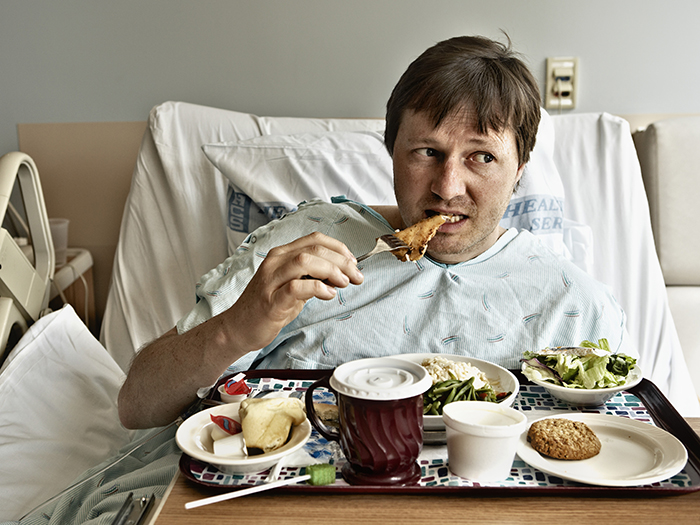4 Reasons Injured Workers Are What They Eat

There are no bodily systems that are not impacted by nutrition.
“You’re circulating nutrients to every single cell, tissue and organ in your body, 24/7. So, nutrition affects everything,” said Kay Stearns Bruening, PhD, RDN, fellow of the Academy of Nutrition and Dietetics.
 Leveraging nutrition as a tool to facilitate injury recovery is a topic of keen interest for the National Comp conference, and a topic that is going to be discussed further on this year’s program agenda. Bruening, a nutrition consultant for Optimized Outcome Solutions, will present Foods that Heal and Help Recovery – the Value of Nutrition for Workers’ Comp on Oct. 19th. Bruening shared some of her thoughts with Risk & Insurance in advance of the presentation.
Leveraging nutrition as a tool to facilitate injury recovery is a topic of keen interest for the National Comp conference, and a topic that is going to be discussed further on this year’s program agenda. Bruening, a nutrition consultant for Optimized Outcome Solutions, will present Foods that Heal and Help Recovery – the Value of Nutrition for Workers’ Comp on Oct. 19th. Bruening shared some of her thoughts with Risk & Insurance in advance of the presentation.
Factoring nutrition into injury recovery requires an intentionality that goes beyond a recommendation to just eat more of one food or less of another. Depending on a person’s overall health situation, figuring out what to eat for optimal recovery from an injury requires layers of support.
This is a fact that Bruening underscores in her conversations around the value of including nutrition counseling in perioperative care plans for patients who will undergo surgery as part of their recovery from a traumatic injury.
1) The Connection Between Traumatic Injury and Malnutrition
Bruening shared some of the emerging science on the role nutrition plays in healing the body after an injury and the perioperative value to help prepare for and recover from surgery.
First things first: Before getting to recipes and specific foods people should eat as they recover from an injury, it’s important to recognize that injuries — especially those of a traumatic nature — and nutrition are connected.
“Any kind of traumatic injury sets up a physiological and hormonal response that can ultimately cause various degrees of malnutrition,” Bruening said. “And when patients have malnutrition, they don’t heal well.”
Not only do patients have to spend more time in the hospital when they are malnourished, but the chances of developing an infection are greater, Bruening explained.
And the chances of them being re-admitted to the hospital after they have been discharged also increase. “And, of course, all of these things add to the cost of taking care of them,” Bruening said.
This cascade of potential complications induced by a depletion of vital nutrients in the body after injury makes replenishment essential during a patient’s recovery.
2) Losing Fat and Lean Muscle Is Taxing on the Body
From the initial moment of shock when the brain sends out stress hormones to glands to let the body know that something terrible has happened, to later stages — when the body begins to resist insulin — a traumatic injury causes the body to shift the flow of nutrients.
Bruening likened the initial phase of a traumatic injury to low tide.

Kay Stearns Bruening, PhD, RDN, fellow of the Academy of Nutrition and Dietetics; nutrition consultant, Optimized Outcome Solutions
“In emergency parlance we would call it shock: heart rate goes down; blood pressure goes down; body temperature goes down. Everything slows down, which is problematic because you’ve got an injury now,” she explained.
“And when the heart rate slows down, you’re not circulating as much oxygenated blood to the injured tissues, so they’re going to start adapting to stay alive with less oxygen. And that creates a nutritional insult.”
After emergency response teams establish fluid balance and make sure the patient is breathing, the heart is beating, and they can circulate oxygenated blood, shortly thereafter high tide comes crashing in, Bruening said.
“We call that the flow phase,” she said. And like the initial shock phase, it’s also hormonally mediated. The hormones released in high tide make the person more insulin resistant than they were before the injury.
“So, if you’re a person who has pre-diabetes or diabetes, you’re already insulin resistant,” Bruening explained. “But even if you don’t have diabetes, you’re going to become more insulin resistant than you were as a result of this injury.”
This means the person will not be able to get as much glucose into their tissues as their tissues really want and need.
“That’s a problem,” Bruening said. “Your brain and your red cells and a few other tissues must have a supply of glucose at all times.
“When there’s no glucose coming in because you’re not eating much, then the hormones of starvation start kicking in, and your liver starts doing starvation metabolism.”
In this state, the liver sends out enzymes and co-factors that break down the body’s muscles, Bruening explained.
“Muscles are largely made of proteins that are made of amino acids. And as soon as you circulate some of those amino acids back to the liver, the liver can convert two of them to glucose.”
Considering the body’s need for glucose at all times, this sounds like a good thing. But the price of relying upon the liver to make new glucose is steep. Losing muscle mass leaves the person’s injured body even further weakened, Bruening said.
After experiencing a traumatic injury, the body also starts to burn fat.
While that may sound like a positive in some cases, Bruening explained the concern: “When we break down fats, we have no pathways to convert it to glucose. So you still have to keep breaking down your lean muscle mass so that you have glucose supply for your brain and your red cells and those other tissues that must have glucose at all times.”
3) When Surgery Is Part of the Treatment Plan, Pre-Operative Patient Education Is Vital
Depending on the level of injury, some patients may have time to prepare for surgical procedures required for their recovery. When this is the case, there is much that can be done to help patients set themselves up for success before and after the procedure.
Greater numbers of surgical teams today are implementing comprehensive pre-surgical preparations known as Enhanced Recovery After Surgery protocols (ERAS).
Utilized in Europe since the late 1990s, with many surgeons in the U.S. also having adopted elements of the approach since then, ERAS places a strong focus on nutrition.
“If a person has pre-diabetes or diabetes, for example, they’ll do better during and after their surgery if their diabetes is well controlled. And it’s just about impossible to control diabetes well without thinking about your nutrition,” Bruening said.
Depending on the type of surgery, weight loss may also improve the patient’s surgical recovery outcomes for a couple of reasons, Bruening explained: “First of all, it makes the whole process of having anesthesia safer.”
And second, weight loss prior to a surgery can make it easier to move the body and place less weight on any joints that may have been involved in the surgical procedure.
“On the other hand, we don’t want them to lose too much weight too fast because then they’re going to lose lean muscle mass,” Bruening said. “They’re going to need all of their muscles for their recovery. And if they lose too much weight too fast, it can also impair their immune system. And that sets them up to be more vulnerable to infections.”
This is where pre-surgery patient education and counseling, part of a growing practice of perioperative care, stands to improve the outcomes of injured patients needing surgery.
“So patients know what to expect,” Bruening said, which helps them and their caregivers prepare for the recovery journey ahead.
4) Food Costs Less than Hospital Stays
Getting patients to eat and drink as quickly as possible after surgery is a priority in most hospitals. Under the ERAS protocols, the same applies.
“They want the patients eating real food right away,” Bruening said.
Ideally something nutrient dense, plant-based perhaps, Bruening said.
“It will supply the nutrients that the patient now needs more of because they have to knit bones back together; if there was an incision, they’ve got wounds to heal; there might have been blood loss [so] they have to make new blood cells.”
When patients head home for the next phase of recovery, they need a game plan on what to eat. But getting nutrition guidance and meal preparation help is not standard protocol.
“Most patients do not get any nutrition education for discharge or recovery. Under the U.S. health care system, that is not a reimbursable service.” This makes any pre-hab education on what to eat after surgery even more vital.
The lack of information on what to eat during recovery from surgery, and the emerging science around the benefits of medically-tailored meals, are in part what drove Bruening’s colleague, Brian Allen, to co-found Optimized Outcome Solutions, an organization that provides injured workers and surgery patients with comprehensive education to support their recoveries.
Based on what the organization has designated as the Four Pillars of Recovery, its program is focused on helping patients maintain the mindset, nutrition, physical activity and proper rest to optimally recover from their injury and surgery.
Mindset and nutrition are the pillars with the greatest emphasis.
Moving toward the medically-tailored meal approach, the program offers a meal plan including recipes for breakfast, lunch and dinner to aid in pre-surgery prep and post-surgery recovery.
Much of the emphasis in the Optimized Outcome Solutions recipes is on building the strength of patients’ microbiome, an intricate network of “bugs” mostly in the small and large intestines that promote “smooth daily operations in the body,” as explained by the Harvard T.H. Chan School of Public Health.
“One of the things that we learned in our research is that anesthesia is really an assault on your body,” Allen said. “And if you don’t have your microbiome right, it can really cause problems for you. So, one of the things that we really focus on is getting people’s microbiomes in line.”
The science is still evolving around the full benefits of medically-tailored meals to aid in patient recovery. But one of the things Bruening has seen in preliminary studies is that “it’s a lot cheaper to provide healthy, nutritious meals to people than it is to let them go back in the hospital.”
“Food is much cheaper than hospital care, even high-quality food that’s individualized to a person’s needs,” she said. “So that may be the future. I think the health insurance companies are going to catch on to that.” &
Hear more from Dr. Bruening and other workers’ comp industry leaders at National Comp 2022 at Mandalay Bay in Las Vegas, Oct. 19-21.










